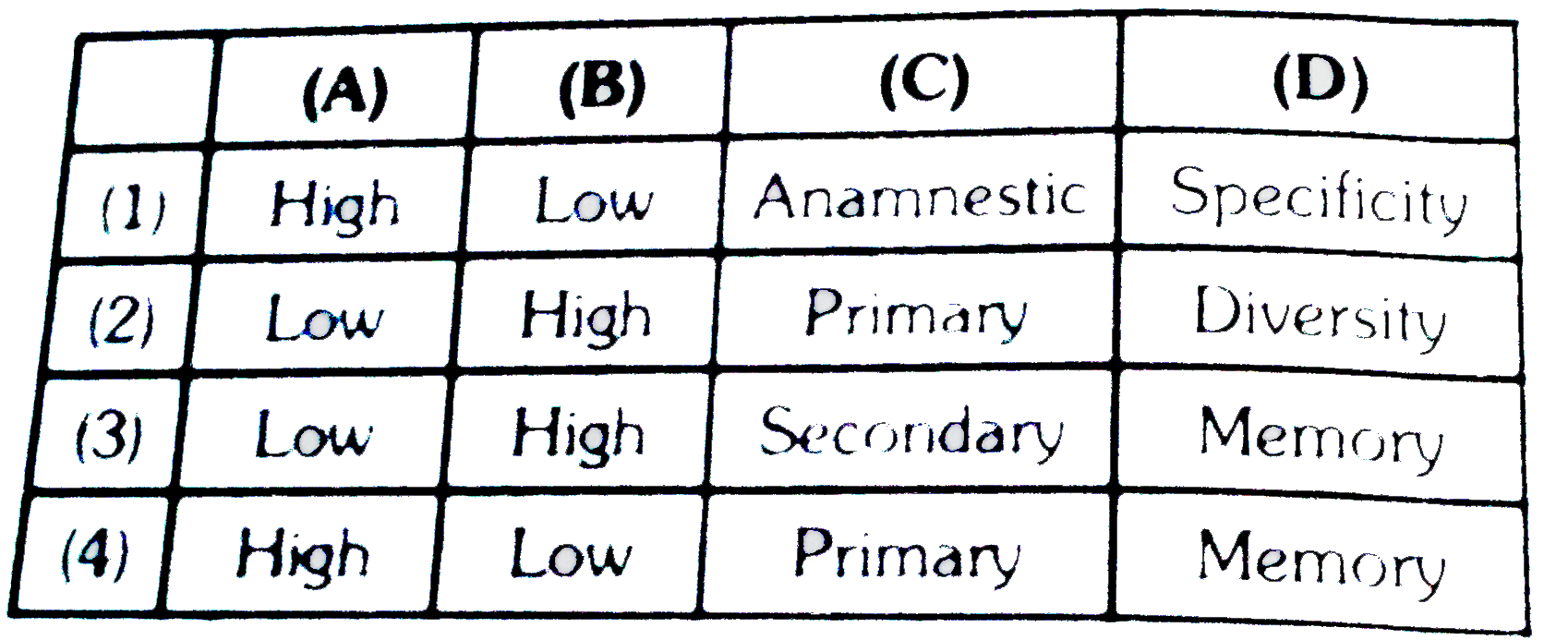Primary response which is of _____(A) _______ intensity. Subsequent encounter with the same pathogen elicit a ______(B) ______intensified______(C)______response, which is based on _____(D)______

Video Solution
Text Solution
The correct Answer is:C
|
Answer
Step by step video & image solution for Primary response which is of _____(A) _______ intensity. Subsequent encounter with the same pathogen elicit a ______(B) ______intensified______(C)______response, which is based on _____(D)______ by Biology experts to help you in doubts & scoring excellent marks in Class 12 exams.
Updated on:21/07/2023Similar Questions
Knowledge Check
Primary response produced due to first time encounter with a pathogen is of
Ahigh intensityBlow intensityCintermediate intensityDno intensity.Consider the following four statements (a-d) and select the option which includes all the correct ones only:
a) B-lymphocytes forms cellular barrier of innate immunity.
b) HLA antigens are called as transplantation antigens
c) Subsequent encounter with the same pathogen elicits a highly intensified anamnestic response.
d) Interferons protect non-infected cells from further viral infection.AStatements, b, c, dBStatements b, cCStatements c, dDStatements a, c, dAssertion : Subsequent encounter with the same pathogen elicits a highly intensified anamnestic response.
Reason : This is based on the fact that our body appears to have memory of the first encounter.AIf both assertion and reason are true and reason is the correct explanation of assertion.BIf both assertion and reason are true but reason is not the correct explanation of assertion.CIf assertion is true but reason is false.DIf both assertion and reason are false.
_______is the pathogen which is responsible for Ascariasis
View SolutionWhich of the following organs is not involved in the elicitation of immune response
View SolutionWhich of these is the pathogen responsible for causing ringworm disease?
View SolutionThe pathogen Microsporum responsible for ringworm disease in humans belongs to the same kingdom as that of
View SolutionWhich of the following organ is not involved in elicitation of immune response?
View Solution
